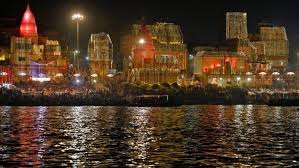The third iteration places special emphasis on the profound contributions of Maharishi Agastya.
More than just an event, the Kashi Tamil Sangamam is a resounding affirmation of Bharat’s timeless civilizational unity, bringing together the linguistic, spiritual, and intellectual legacies of Tamil Nadu and Kashi. Now in its third edition, this initiative, championed by Prime Minister Narendra Modi, has expanded its scope, delving deeper into India’s knowledge traditions and reinforcing the enduring wisdom of its ancient scholars. This year’s thematic focus on Maharishi Agastya highlights the interconnected wisdom of the Indian Knowledge System (IKS), underscoring its contemporary relevance in a rapidly shifting global landscape. Tamil, the most ancient language was also the language of trade and commerce in the Indo Pacific during the period of the Pallavas and Cholas who were the maritime powers. PM Modi, the tallest leader and statesman, has understood the power and spread of Tamil and its ancient history that was outward and spread Indian culture far and wide.
A SACRED CONVERGENCE
The origins of the Kashi Tamil Sangamam lie in the historical ties between Tamil Nadu and Kashi, two of the most sacred and intellectually vibrant centres of Indian civilization. Launched in 2022 under Ek Bharat Shreshtha Bharat, this initiative seeks to revive and celebrate these millennia-old connections. More than just an exchange program, it is a reawakening of shared knowledge systems, a rediscovery of a bond that has withstood the tests of time.
Unlike previous editions that broadly celebrated this link, the third iteration places special emphasis on the profound contributions of Maharishi Agastya, a sage revered for his pioneering work in Tamil linguistics, Ayurveda, and spiritual philosophy. His role as a unifying force between Bharat’s northern and southern traditions is unparalleled. The significance of this year’s Sangamam is further elevated by its alignment with cultural milestone—the Maha Kumbh at Prayagraj— makes it a profoundly symbolic moment of national and cultural resurgence. Prime Minister Modi’s vision has been instrumental in bringing such transformative initiatives to the forefront. By weaving these civilizational linkages into the national discourse, he is ensuring that India does not merely recall its past, but actively reclaims and integrates it into the present. This must not be confused with nostalgia but be viewed as restoration of pride in our indigenous knowledge systems, which colonial distortions and leftist narratives sought to diminish. In such a sense, the Sangamam is a step toward rewriting our own history on our own terms.
MAHARISHI AGASTYA: SAGE WHO UNIFIED BHARAT
Maharishi Agastya is a fundamental figure in India’s intellectual and spiritual traditions. Often referred to as the father of Tamil literature, he is credited with composing Agattiyam, one of the earliest Tamil grammar texts, which ensured the linguistic sophistication of Tamil while preserving its Vedic connections. His contributions transcend literature; he was a master of Siddha medicine, an ancient healing system still revered today for its holistic approach.
Beyond his scholarly impact, Agastya embodies the harmonious integration of traditions of northern and southern parts of Bharat. His teachings emphasize the balance between material progress and spiritual enlightenment, a philosophy that remains extremely relevant in modern discourse. The decision to highlight his contributions in this year’s Kashi Tamil Sangamam is vivacious, for his legacy is a testament to India’s unbroken intellectual continuum and the seamless interplay of its diverse knowledge systems.
The Sangamam’s focus on Agastya must not be understood merely as an academic exercise but as a reassertion of Bharat’s unique civilizational ethos. It serves to counter the reductionist narratives that have long sought to fragment India’s cultural unity. By celebrating Agastya’s legacy, we are reaffirming a truth that colonial and Marxist historiography sought to obscure—that Bharat’s intellectual and spiritual traditions are profoundly interconnected and universally relevant.
GLOBAL POTENTIAL OF TAMIL SANGAMAM
Beyond being a cultural renaissance and a nationalistic endeavour, Kashi Tamil Sangamam has immense potential as a tool for India’s soft power projection. India’s cultural and intellectual traditions offer a compelling narrative that can counter the Western-dominated discourse on global history. By positioning India as the fountainhead of knowledge, spirituality, and innovation, the Sangamam can play a crucial role in reshaping global perceptions of Bharat. The case in point is Agastya, whose influence extends beyond the Indian subcontinent. His presence in Buddhist texts links him to the spiritual and philosophical traditions of Southeast Asia, Tibet, and Japan. This creates an organic bridge for India to strengthen its cultural diplomacy in regions where Buddhism remains profoundly influential. Countries like Thailand, Myanmar, Sri Lanka, and Vietnam can be engaged through India’s historical ties to Buddhist philosophy, with Agastya serving as a civilizational touchstone.
Moreover, Agastya Andhi, a poetic composition attributed to Agastya, resonates with the moral and ethical teachings of Buddhist scriptures such as the Dhammapada. By deliberately highlighting these connections, Kashi Tamil Sangamam can serve as a platform for intellectual and diplomatic engagement, extending India’s soft power reach beyond South Asia. To fully harness this potential, the event should be further institutionalized with collaborations between Indian and foreign universities, think tanks, and cultural organizations. By promoting research, cultural exchanges, and international academic discussions around Agastya’s legacy, India can project itself as a civilizational leader that continues to shape the global knowledge ecosystem.
RECLAIMING LEGACY TO SHAPE FUTURE
Kashi Tamil Sangamam is not just an annual event—it is a movement to reclaim, restore, and reassert Bharat’s rightful place as a civilizational beacon and for this the most ancient language Tamil contributes to connect to the past. Sangam periods that showed the civilisational superiority and the literary heights that they scaled is unthinkable. The West was picking up stones, so it is we who civilised them not the other way around. For far too long, our intellectual contributions have been diminished by colonial distortions and leftist historiography. By placing figures like Maharishi Agastya at its core this time, the initiative sets the stage for a long-overdue correction. India is not a nation defined by recent history—it is a civilization that has thrived for millennia, its wisdom shaping not just the subcontinent but influencing thought worldwide. The simplistic caricatures imposed by colonial and Marxist narratives do not define us. Our texts are older, wiser, and far more profound than the limiting frameworks imposed upon us. By integrating the IKS into the national consciousness, Kashi Tamil Sangamam is illuminating the path toward an India that remembers its past and actively leverages it for the future. This is our opportunity to celebrate, reclaim, and project our civilizational ethos on the global stage, ensuring that the wisdom of our ancestors continues to guide the generations to come.
* Prof Santishree Dhulipudi Pandit is the Vice Chancellor of JNU.







